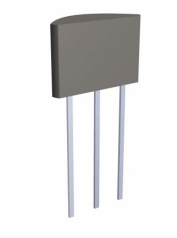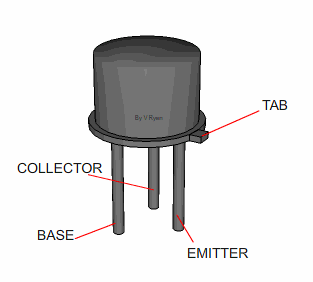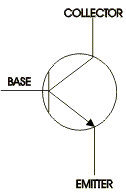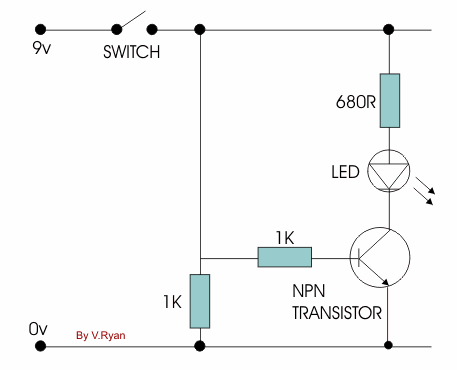Kt Kingtronics Strong Offer for Transistors
Transistors can be regarded as a type of switch, as can many electronic components. They are used in a variety of circuits and you will find that it is rare that a circuit built in a school Technology Department does not contain at least one transistor. They are central to electronics and there are two main types; NPN and PNP. Most circuits tend to use NPN. There are hundreds of transistors which work at different voltages but all of them fall into these two categories.
TWO EXAMPLES OF DIFFERENT SHAPES OF TRANSISTOR


Transistors are manufactured in different shapes but they have three leads (legs).
The BASE - which is the lead responsible for activating the transistor.
The COLLECTOR - which is the positive lead.
The EMITTER - which is the negative lead.
The diagram below shows the symbol of an NPN transistor. They are not always set out as shown in the diagrams to the left and right, although the ‘tab’ on the type shown to the left is usually next to the ‘emitter’.
The leads on a transistor may not always be in this arrangement. When buying a transistor, directions will normally state clearly which lead is the BASE, EMITTER or COLLECTOR.


Diagram 'A' shows an NPN transistor which is often used as a type of switch. A small current or voltage at the base allows a larger voltage to flow through the other two leads (from the collector to the emitter).
The circuit shown in diagram B is based on an NPN transistor. When the switch is pressed a current passes through the resistor into the base of the transistor. The transistor then allows current to flow from the +9 volts to the 0vs, and the lamp comes on.
The transistor has to receive a voltage at its ‘base’ and until this happens the lamp does not light.
The resistor is present to protect the transistor as they can be damaged easily by too high a voltage / current. Transistors are an essential component in many circuits and are sometimes used to amplify a signal.









